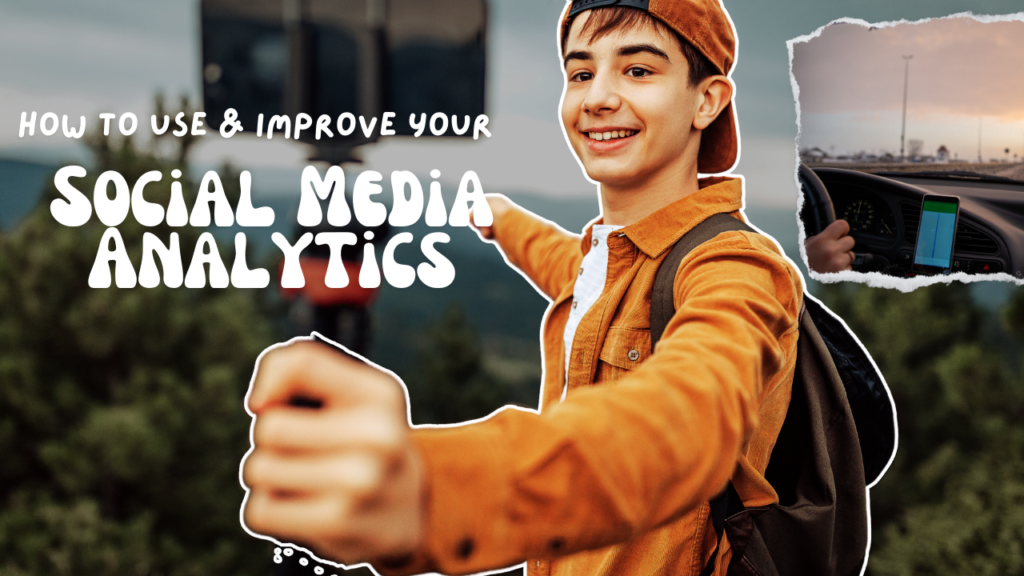Data is the new currency, and social media has become a harbinger of new-age digital marketing. It has completely transformed the interaction between the businesses and their customers. This is where social media analytics comes into play. Digital marketers and social media managers use these tools to make data-driven decisions. It helps companies evaluate their online presence and user sentiments.
Compiling and analyzing a vast ocean of data can be confusing and nerve-wracking. With the right tools and strategy, social media analysis can grow any business to greater heights.
Why Social Media Analytics Is Indispensable
From small businesses to big corporations, analyzing customer interaction is very crucial. It helps in crafting effective marketing strategies by:
- Predicting forthcoming trends in the marketing world
- Setting realistic goals and objectives
- Understanding user sentiments and behavior with the brand
- Proving Return On Investment (ROI)
- Tracking cross-channel and influencer marketing
- Following rival brands of the same niche
Brands can use these insights to enhance their content’s visibility and authenticity.
8 Best Ways To Use Social Media Analytics
The use of analytics tools has surpassed its basic function of tracking profits. Top-selling brands utilize it for:
Trend Analysis Or Trendspotting
Trend analysis refers to the practice of identifying consumer patterns and behavior. It is used by businesses and marketers to innovate new trends to draw user’s attention. With the help of social media analysis, they predict future trends to capitalize on new opportunities. It further helps in tracking consumer’s interaction with:
- Various ads and campaigns
- Content published online
- Popular social media platforms and influencers
- Latest technologies and topics of interest
Brand Sentiment Analysis
Social media analytics play a major role in growing brand awareness. It helps understand how consumers feel about the brands and their services. Brands can track:
- Brand mentions
A Brand’s native social media profile and paid social media often reflect public sentiments. Marketers should study all the positive and negative reviews and comments left by the users. This will help them analyze what products are doing well and what needs to be improved.
- Brand Awareness
A brand’s PR runs multiple ads and campaigns to grow the customer base. It is an absolute necessity to employ social listening tools. These tools analyze the engagement rate of content created by a brand. Further, this helps identify the key elements that bring in organic traffic.
User Analysis
As a brand, you need to identify and study your target audience. Many digital marketing analytics tools provide insights into demographic data. Brands can track the age, gender, location, and behavior of their audience. This will help them customize the content to reflect the user’s demand and increase the conversion rate.
For instance, if data highlights that maximum consumers are females in their early twenties from metro cities. Their interest is health and beauty. It makes strategic sense to design ad campaigns and content that can attract more clicks and shares from this group.
Performance Analysis
Digital marketers often rely on social media analytics to segment data of high-performing and underperforming assets. A brand needs to prioritize customer conversion rates to increase sales. Various social media metrics need to be parsed:
- Content’s reach
- Engagement
- Likes and shares
- Views
- New followers and subscribers
- Best selling products
- Popularity
This data gives a realistic overview of the overall performance of the brand’s social media and website. They can use it to improve and test their future content creation.
Return On Investment (ROI) Analysis
Social media managers and PR agencies of successful brands run multiple campaigns and collaborations. This often involves many influencers and celebrities. Therefore, to keep track of everything, social media analytics tools come in handy. They measure:
- Total active ads and ad spend
- Click-through rate (CTR)
- Conversion rate
- Profits per collaboration
- Referral codes and affiliate link usage
- Interactions per post created in collaboration
Many social media platforms that run ads have their dashboards. They give helpful insights into these metrics. Brand managers can also maintain spreadsheets to compile the data for future use.
Cross-Channel Marketing Analysis
Keeping all eggs in one basket is never beneficial. Thus, it is important to use multiple content distribution channels. This amplifies the brand’s visibility and its chances of going viral. When customers see a brand’s content on different platforms, its recall value also shoots up.
Additionally, the engagement rates of different platforms are tracked to compare their performance. For example, if data shows more active audience engagement on Instagram than on YouTube, the former should be prioritized.
Also Read: 5 Content Creation Tools You Need to Know About
Competition Analysis
As the popular saying goes, “Keep your friends close and your enemies closer,” it is crucial to watch over your competition. You can use social media analytics to track the best-performing brands in your niche. It is used to study their followers, engagement, products, and marketing strategy.
This helps parse data to compare and review the brand’s marketing practices. For instance, if a successful rival company in your domain is gaining 30 followers per week, you can use this data to set more realistic growth goals.
Customer Service Analysis
Customer is the king, and customer satisfaction is the ultimate goal. And, customer feedback and testimonials are tracked to improve products and services. Consumer retention is directly related to the reliability and promptness of customer service. AI tools and chatbots are used to answer common FAQs. Brands should use social media analysis to update FAQs and train AI chatbots.
Popular Social Media Analytics Tools
A plethora of analytics tools are available online. Social media marketers can use this curated list to get started:
- Google Analytics
- Hootsuite
- Sprout Social
- Rival IQ
- Buffer
- Keyhole
…and many more.
Conclusion
Social media analytics are significant in formulating effective growth strategies when paired with actionable outcomes. These tools have bridged the gap between the brands and their consumers. It helps in creating personalized content that reaches the right audience. Now is the best time to harness its power to achieve meaningful engagement and skyrocketing sales.
Follow Wabbithire for more.




